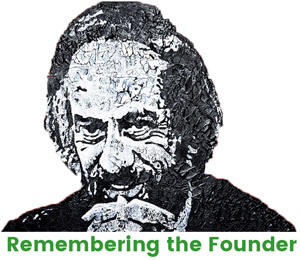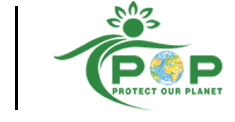Key Messages >>>
- How does climate change influence conflict and insecurity globally?
- What reforms are needed in the global process for an accelerated action-oriented response to conflicts and insecurities resulting from climate change to improve human security and peace for sustainable development?
- How can individuals and societies contribute through love and compassion for the achievement of Peace and Human Security for Sustainable Development?
Introduction
The adverse effects of climate change and ecosystem degradation extend far beyond the environmental realm and increasingly shape human activity. Rising temperatures, more severe and frequent extreme weather events, and erratic rainfall cause or exacerbate volatile food prices, insecure livelihoods, and large-scale displacement. Sea level rise is an existential threat for small island states and raises questions regarding maritime boundaries and national identity. Around the world, climate change alters politics, economies, and societies in ways that have profound consequences on Global Peace and Human Security.
Climate Change: Fueling Conflicts and Insecurity
Climate change alone is rarely the root cause of conflict and insecurity. However, through its interplay with social, political, economic, and demographic factors, it can create cascading effects that undermine conflict prevention and peacemaking objectives. Increasingly evidence shows that the effects of climate change can exacerbate existing fault lines and vulnerabilities thereby fuelling violence and insecurity. The effects of climate change are felt in every corner of the world and can affect conflicts in different ways. They can be a source of conflict, a multiplier of existing risks, or an opportunity for manipulation by conflict parties to gain advantage.
In many cases, however, climate linkages are more indirect, complex, and interwoven with socio-economic, identity-based, and political factors than may be immediately obvious to the conflict parties themselves or to those supporting efforts to end the conflict. They may include longer-term environmental processes, such as shifts in agroecological zones, availability of pastures, land degradation, and depletion of natural resources. In turn, these shifts may contribute to the loss of livelihoods, forced displacement, stresses on institutional capacities, and disruptions or breakdowns in the delivery of public services, ultimately undermining the ability of society to productively manage and resolve tensions and disputes (UNDPPA 2022).
According to the briefing note from The Climate Security Mechanism (Climate Security Mechanism 2020), the impact of climate change on security is highly contextual and determined by the localized interplay of multiple factors. How these interlinkages can manifest in real life situation, are, for example:
- Climate change could straightforwardly heighten the risk of conflict by increasing water scarcity and creating tensions over water resources.
- The deterioration of natural resource-based livelihoods in climate change-affected contexts can incentivize young men and women seeking to support themselves and their families to join armed groups. The growth of armed groups, in turn, exacerbates insecurity, limits mobility, and makes adapting to a changing climate ever more challenging.
- Climate change impacts such as increasing temperatures, drought, and sea level rise create more volatile food prices, increase competition for natural resources, and make livelihoods less secure. This in turn can contribute to instability and fragility, in particular when interacting with other possible conflict drivers such as inequality and marginalization.
- The increase in climate change-related extreme weather events is already creating new demands for militaries in their capacity as first responders. In addition, they have costly impacts on military installations and capacities, especially naval bases.
- Climate change creates additional demands for state services, e.g., disaster assistance in the aftermath of storms, food aid, and safe management of displacement. When unmet, these needs can compound pre-existing grievances over inequality, political marginalization, and unresponsive governments.
Millions of displaced people are caught at the frontlines of climate change and conflict. Ninety percent of refugees come from countries that are highly climate vulnerable, 22 most of which are also affected by conflict such as Afghanistan, Syria, and South Sudan. Among the countries most exposed to the impacts of climate change, many also host large numbers of refugees and internally displaced people. Bangladesh hosts more than 870,000 Rohingya refugees who fled violence in Myanmar and are now exposed to increasingly frequent and intense cyclones and flooding.
Displacement exacerbates gender imbalances and risks of exploitation, including through human trafficking and forced labor, with particular risks for women and girls. While the link between climate change and human trafficking remains understudied to date, there is consensus that forced migration and displacement increase the risk of vulnerability to trafficking and modern slavery. Human trafficking, in turn, can provide a source of income for organized criminal networks and conflict parties, which can also contribute to broader insecurity (United Nations Department of Political and Peacebuilding Affairs [UNDPPA] 2022).
Today’s climate and environmental crises affect every aspect of our lives, from our physical and mental health to our food, water, and livelihoods. While these crises affect everyone, those hit hardest are the poorest and most marginalized communities. People living through conflict witness massive environmental changes as their daily lives are not only made more difficult by the violence they experience, but also by a changing climate and environment in which they are often ill-prepared for the repeated climate hazards (ICRC 2023).
Recent evidence confirms the confluence of climate and conflict risks showing that a large portion of the population and/or extensive land areas in fragile states face high climate risks. Indeed, 70 percent of the bottom quartile of countries most vulnerable to climate change are also in the bottom quartile of the most fragile countries in the world. This underlines the increasing need to address climate change, fragility, and conflict risks together. At the same time, planning and implementation of climate change adaptation programming is lagging in conflict-affected and fragile states. New modes of delivery are urgently needed. As climate change, disasters and conflicts are interlinked, our responses must reflect the multidimensionality and interconnected nature of risks (Climate Security Mechanism 2020).
Peacebuilding and Human Security
According to the United Nations, peacebuilding refers to efforts to assist countries and regions in their transitions from war to peace and to reduce a country’s risk of lapsing or relapsing into conflict by strengthening national capacities for conflict management, and laying the foundations for sustainable peace and development (United Nations; peace, dignity and equality on a healthy planet).
While climate change can shape conflict dynamics, we must also consider that any future peace will play out in a changing climate as well. For peacemaking, peacekeeping, or peacebuilding plans and strategies to be truly sustainable, they need to factor in climate change impacts at all policy stages: early warning and assessment, planning and financing, implementation, and monitoring (Climate Security Mechanism 2020).
According to a UNDPPA practice note, understanding and unpacking this confluence of risks has become increasingly important in conflict and political analysis in identifying peacemaking and peacebuilding opportunities and in building resilient, peaceful, and inclusive societies.
Love, the Culture of Peace and Compassion as Pillars of Sustainable Development
“Making peace with nature is the defining task of the 21st century. It must be the top, top priority for everyone, everywhere.” UN Secretary General Antonio Guterres (UN 2020).
The Culture of Peace is a set of values, attitudes, traditions, and way of life based on respect for life, sovereignty, territorial integrity, fundamental and human rights, commitment to dialogue, peaceful settlement of conflicts, equality, gender, freedom of expression, development and adherence to the principles of justice, and freedom, cooperation, fostered by an enabling national and international environment conducive to peace (United Nations; Human Fraternity for peace and cooperation).
The need is ever urgent to recognize the valuable contribution of people of all religions and beliefs, to humanity and the contribution that dialogue among all religious groups can make towards an improved awareness and understanding of the common values shared by all humankind.
We also need to underline the importance of raising awareness about different cultures and religions, and beliefs and the promotion of tolerance, which involves societal acceptance and respect for religious and cultural diversity including with regard to religious expression. Education, in particular at school, should contribute in a meaningful way to promoting tolerance and the elimination of discrimination based on religion and belief.
At the core of all the faith systems and traditions is the recognition that we are all in this together and that we need to love and support one another to live in harmony and peace in an environmentally sustainable world. Our world continues to be beset by conflict and intolerance with rising numbers of refugees and internally displaced in a hostile and unwelcoming world around them. We are also, unfortunately witnessing messages of hate that are spreading discord among people. The need for spiritual guidance has never been greater. It is imperative that we double our efforts to spread the message of good neighborliness based on our common humanity, a message shared by all faith traditions (United Nation; Human Fraternity for peace and cooperation).
According to the Satyarthi Movement for Global Compassion (SMGC), Compassion is the most powerful way to restore justice and peace and ensure a lasting and sustainable future for all. With over two billion people living in conflict-affected areas, promoting The Culture of Peace, Love, and Compassion for all Humans and the Earth are very essential for the achievement of sustainable development.
Questions
From the above discussion, the following questions become relevant:
- How does climate change influence conflict and insecurity globally?
- What reforms are needed in the global process for an accelerated action-oriented response to conflicts and insecurities resulting from climate change to improve human security and peace for sustainable development?
- How can individuals and societies contribute through Love and Compassion for the achievement of Peace and Human Security for Sustainable Development?
Bibliography
United Nations Department for Political and Peacebuilding Affairs (2022) “The Implications of Climate Change for Mediation and Peace Processes”, URL: https://dppa.un.org/en/addressing- impact-of-climate-change-peace-and-security
United Nations Department for Political and Peacebuilding Affairs (2022) “Gender and Climate in Peace and Security” URL: https://peacemaker.un.org/node/3769
International Committee of The Red Cross (2023) “Climate Change and Conflict” URL: https://www.icrc.org/en/what-we-do/climate-change-conflict
United Nations “Peace, Dignity and Equality on a Healthy Planet” URL: https://www.un.org/en/global-issues/peace-and-security
United Nations “Human Fraternity for peace and cooperation” URL: https://www.un.org/en/observances/human-fraternity
Climate Security Mechanism (2020) URL: https://dppa.un.org/sites/default/files/csm_toolbox-1- briefing_note.pdf
UNEP (United Nations Environmental Programme) (2021) “Disasters and Conflicts” URL:
https://www.unep.org/news-and-stories/story/climate-action-holds-key-tackling-global-conflict
SMGC (Satyarthi Movement for Global Compassion) URL: https://satyarthimovement.org
Fight Climate Change (FCC) URL: https://fightclimatechange.earth/2022/10/13/how-war-impacts- climate-change-and-the-environment



